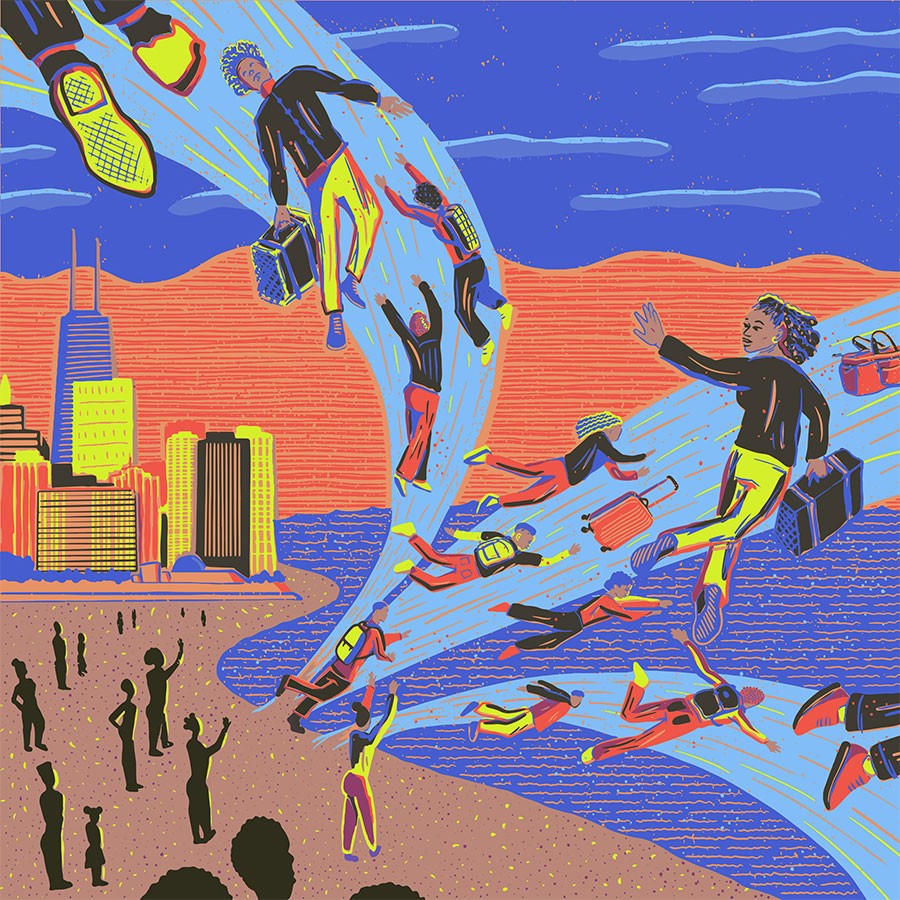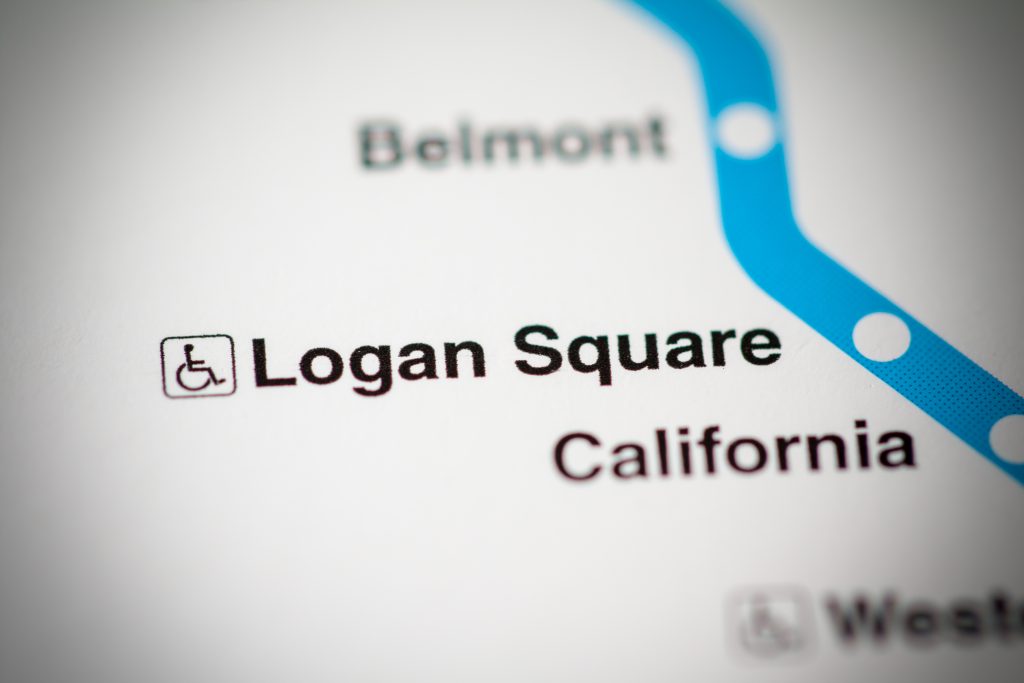Chicago is many things—a global city, a city of neighborhoods, a “City on the Make”—and also one of America’s most segregated cities. While the region creates 200,000 jobs a year, the unemployment rate among black Chicagoans is more than three times higher than that of white residents and one-and-a-half times higher for Latinos. Life expectancy on the city’s South and West sides is fully 15 years shorter than in the high rises of downtown. These divisions reveal deep, historical inequities.
But a new approach to mending these rifts is gaining attention. Elevated Chicago, SPARCC’s collaborative partner consisting of 17 organizations citywide, is helping transform the way Chicago positions its future to ensure everyone thrives. As it works with allies ranging from neighborhood residents to the Mayor’s office, Elevated Chicago is prioritizing racial equity in each step of its work.

Why Elevated Chicago’s Approach is Different
Elevated Chicago is focused on bringing equitable transit-oriented development (eTOD) to seven sites across the city where people of color are at risk of being displaced by gentrification or lack of investment. ETOD is a development strategy that focuses on areas around transit stops as places to invest in small businesses, housing, public art, green infrastructure and other assets—with the hope of retaining residents and improving their quality of life.
With a combined focus on public art, health, climate, and above all, racial equity, projects supported by Elevated Chicago and its partners range from connecting community to a food service incubator near a West Side transit stop to filling funding gaps on a $2.1 million community center in a predominantly Latino neighborhood along the city’s “Pink Line,” an 11-mile part of the city’s “L” transit system.
To date, Elevated Chicago has aligned philanthropic and governmental sources of funding and deployed more than $1 million in grants to nonprofit organizations supporting the seven target areas and the collaborative’s ambitious systems change agenda. But it’s not just the money that has caught people’s attention.
“The difference is that Elevated is led by people of color,” says Program Director Roberto Requejo. And those perspectives, he says, are “not the usual perspectives” one finds at the tables that make development decisions about the fate of Chicago’s neighborhoods.
Instead, this is neighborhood development led by residents working together with city leaders, urban planners, and developers to both induce new development and ensure that it is equitable. The effort is intentional about connecting leaders and experts across fields, including public health, affordable housing, transit, arts and culture, and climate change.
Past attempts to bring capital and development to neighborhoods, Requejo said, were either explicitly racist or overtly colorblind by not paying attention to people of color. The result was disinvestment in certain neighborhoods and displacement in others.
“So, we’re moving from a place that started from institutional racism to one with racial equity at the center,” he said.
Most decisions are made by consensus of the assembled group, including representatives from eight community-based organizations (such as Sunshine Enterprises, KLEO Center, LUCHA or Foundation for Homan Square), Chicago Department of Public Health, and leading mission-driven investors and philanthropy organizations like the Chicago Community Trust, Enterprise, IFF, and private sector representatives from Washington Park Development group and ThoughtWorks. Additionally, Elevated Chicago’s Leadership Council periodically engages senior leadership from the Mayor’s Office and several city departments, the Chicago Transit Authority and other regional leaders to extend their work to critical institutions.
This rich collaboration, transparency, and impact have led philanthropies to align their funding with Elevated Chicago’s goals and city departments to coordinate their work in ways that complement the organization’s mission. The Chicago Department of Public Health, for example, targeted its $200,000 pool of grants and technical assistance for walkability projects in the seven hubs where Elevated works, said Requejo.
As a result of the collaborative process, grants have been more representative of community voices. For example, a grant to Black Girls Break Bread focused on how African American girls experience transit and neighborhood development. The group was not on the radar of any of the funders at the table, said Requejo, but community partners familiar with it pulled its application from the pile.
Elevated’s success can also be attributed to another factor: conflict fatigue. People are tired of the standard opaque, top-down approaches to neighborhood investment, and of having to constantly organize against, rather than for, development, Requejo said. Elevated’s horizontal model is an alternative to the “us vs. them” culture.
“Our table is a flat one, and we find solutions that have appeal to a diversity of partners,” he said.
Making a Real Impact
Elevated Chicago’s work is gaining adherents as its projects take root.
In late 2018,for example, the Mayor’s Office approached it to help shape the city’s TOD Ordinance renewal. The ordinance, first enacted in 2015, allows developers to increase density and to reduce the number of required parking spots for new housing near transit stops. In the renewal, the City wanted to expand the definition of “transit” to include several busy bus routes and sought Elevated’s input to ensure equity and community support.
While Elevated Chicago was more than happy to help, it also had an ask – for the City to add an explicit racial equity lens to the ordinance, addressing the risk of resident displacement that can occur with TOD and the depopulation in bypassed neighborhoods.
The result is a rule that explicitly calls out equity—an eTOD ordinance. Developments should avoid “displacement of residents, small businesses, cultural institutions, and community organizations” and encourage “investment in communities of color and low-income communities and appropriately addressing various market conditions,” the ordinance states.
“If it wasn’t for the close and transparent collaboration between our steering committee members and the City departments involved, the provisions for developing an equity policy plan wouldn’t have been as rich and thoughtful,” Requejo said.

The call for more equitable development wasn’t created out of thin air. Logan Square, for example, lost nearly 20,000 Latinos between 2000 and 2014 as various TOD projects, including the wildly successful 606 Trail, led to rising housing costs and rapid gentrification. During the same period, the city’s Black communities lost 200,000 residents due to a mix of market pressure and disinvestment across different parts of the city.
“If you let us test how can we make TOD equitable, we will show you that the results will be beneficial to everyone,” Requejo told WBEZ, “and in particular will elevate the outcomes in health, in climate resiliency, in access to arts and culture, for residents of those communities, which are majority people of color, and for the entire city.”
At the foot of the “L” transit station at Kedzie and Lake in Chicago’s East Garfield Park neighborhood, residents have watched as a vacant lot has been transformed into The Hatchery, a 67,000 square foot building with shared and private kitchens, training spaces, and food storage, all designed to help food service businesses get off the ground. In collaboration with Elevated Chicago partners, the owners have incorporated training opportunities for small business owners and workforce development programs for residents. After the 12-week program, graduates are guaranteed placement in a high-end Chicago restaurant.
Just down the street is the future site of something you don’t always see in a city: a fruit orchard. Part of the city’s “resilient corridors” program to handle storm water more efficiently, the East Garfield Park Community Eco Orchard will help the city prevent flooding while training local residents in tree care and other green skills. The residents will also benefit from the fresh fruits available from the orchard.
“We’re looking at this orchard [as part of] the food hub in the neighborhood, so it will not only bring food but bring jobs to the neighborhood,” Mike Tomas, executive director of the Garfield Park Community Council and Elevated Chicago member, told Austin Weekly News.
Farther north in rapidly gentrifying Logan Square, Elevated Chicago partners worked with developers building a boutique hotel on the site of a former furniture factory to create a community benefits agreement. Usually hard to pull off and often controversial, a community benefits agreement is a project-specific, negotiated agreement between a developer and a community coalition that outlines the project’s contributions to the neighborhood.
But in this case, Elevated Chicago partners created the right table. Two leading community organizations, the Center for Changing Lives and Logan Square Neighborhood Association, met with the developer to hash out the agreement.
Under its terms, the hotel developer will now hire three-fourths of its employees from the neighborhood for both construction and hotel staff. Employees will earn at least $17 an hour, the Logan Squarist reported.
Bottom Line, Elevated Chicago Helps Heal Deep Divisions
The way Elevated Chicago’s members see it, helping the city to transform development around transit can transform the city as a whole, and this approach can stand as a model for equity, human connection and unity in communities nationwide.
“We’re providing the table where we can talk and solve some of these problems together,” said Requejo. “We offer a place where an organizer, a city commissioner, an artist, a developer, and a health provider can all agree on what government, corporations and anchor institutions have done wrong in the past, take collective responsibility to address the racial inequities caused by those actions, and come up with long-term solutions that people can touch and feel.”